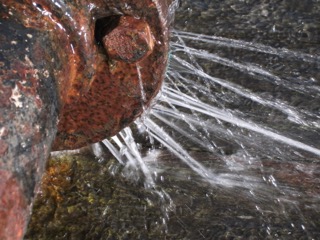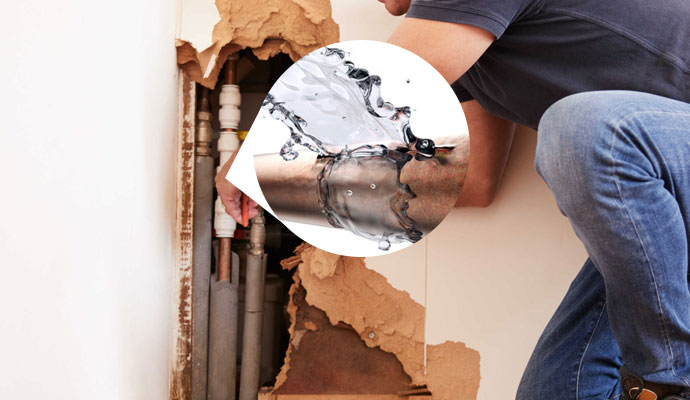From Detection to Correction: A Fast Approach to Handling Burst Pipes
From Detection to Correction: A Fast Approach to Handling Burst Pipes
Blog Article
This great article listed below in relation to How to Install and Connect a New Dishwasher is pretty much fascinating. Read it for yourself and decide what you think about it.

A burst pipeline is a major emergency; you can just stand as you enjoy water you pay dearly to rejoin with the earth. In worse situations, you discover a swimming pool on your kitchen flooring, which is a terrific journey risk, especially if you have kids around. If the pipe that ruptured was in your wall surfaces, bad news: you might require to paint that whole area.
How can a tragedy like a burst pipeline be avoided and also handled? Well, by paying attention to your specialist emergency plumbings and also following these policies.
How do I understand when my pipes have ruptured?
Fluctuating water pressures
Pipelines do not just burst in a day. You might have seen that your kitchen tap or shower does not run right away when you transform the faucet. It might pause for a few secs and then blast you with even more force than common.
In other instances, the water may seem typical in the beginning, then drop in stress after a couple of seconds.
Damp walls and also water stains
Before a pipeline ruptureds, it will certainly leakage, most times. If this relentless leaking goes undetected, the leak may finish into a large tear in your pipeline. One very easy way to avoid this emergency is to keep an eye out for wet walls ad water spots. These water discolorations will certainly lead you right to the leak.
Puddles under pipes as well as sinks
When a pipeline ruptureds, the discharge creates a puddle. It may appear that the puddle is expanding in dimension, and also despite the amount of times you wipe the pool, in a couple of mins, there's another one waiting to be cleaned. Frequently, you may not be able to trace the puddle to any type of noticeable pipes. This is a sign to call a specialist plumber.
Untraceable trickling noises
Pipeline ruptureds can occur in the most undesirable locations, like within concrete, inside walls, or under sinks. When your house goes silent, you might have the ability to hear an irritatingly persistent dripping sound. Also after you've checked your shower head and also cooking area tap, the dripping might continue.
Dear viewers, the trickling might be originating from a pipe inside your walls. There isn't much you can do about that, other than inform a specialist plumber.
Turn off the Water
When water freezes, it expands in volume by concerning 9 percent. And also it broadens with incredible force: The pressure inside pipelines might go from 40 pounds per square inch to 40,000 psi! No pipe can hold that much stress, so it bursts. The break may take place where the ice kinds, yet regularly, it occurs where water pressure finds a weak spot in the pipe. That may be inches or even feet from the frozen location. Locate the water shutoff valve as well as turn off the water to prevent more damages. You could additionally need to shut off the electrical energy also, depending upon where the leakages takes place and also exactly how large it is.
Contaminated water
Lots of people presume a burst pipeline is a one-way electrical outlet. Fairly the contrary. As water flows out of the hole or laceration in your plumbing system, impurities locate their method.
Your water may be infected from the source, so if you can, inspect if your water container has any problems. Nonetheless, if your drinking water is supplied and also detoxified by the city government, you must call your plumber quickly if you see or scent anything amusing in your water.
What do I do when I spot a burst pipeline?
Your water meter will certainly continue to run also while your water wastes. To decrease your losses, discover the major controls and turn the supply off. The water mains are an above-ground framework at the edge of your building.
How to Fix & Detect a Leaking Pipe
How Do I Know if a Pipe is Leaking?
Leak detection tests can help you determine if your pipe has a leak. Even if you don’t see an apparent leak, you should still conduct leak detection tests regularly to save water and money—and prevent major damage to your home.
Water meter. It can be helpful to figure out what your usual water meter usage numbers are and then monitor them regularly. To monitor your meter, first, turn off all water faucets in your home. Check the meter and write down the numbers. In a few hours, check the meter again. If the numbers have changed, you have a leak. Water gauge. Use a water gauge to test your water pressure. Your showerhead should produce a certain amount of water pressure based on its model and design. If the pressure is lower than it is supposed to be for that specific showerhead, your home likely has a leak. Puddles. Look inside your bathroom, laundry, and kitchen sink cabinets. Puddles around the cabinets or around toilets, tubs, showers, and washing machines indicate the presence of a leaking pipe. You may also notice loose tiles, peeling or flaking paint, or mold caused by water accumulation. Napkin test. Even if you don’t see any puddles, you may still have a leak. You can test for water leaks in the bathroom, laundry, and kitchen by wiping below-sink connections with a napkin, paper towel, or piece of toilet paper. If it becomes damp, you probably have a leaking pipe under the sink. Discolored walls. Walls that are discolored—usually with brown or yellow stains—or bulging might mean that they have been impacted by water damage caused by a leaking pipe. Smell. A leaky pipe will create sitting water, and over time, that water may develop a musty smell. If your home smells musty, but you can’t locate the source, it may be due to a leak. Steps for Fixing a Leaking Pipe
A leaky drain can be remedied by tightening the pipe base, replacing the drain seal, caulking the rim, and tightening the pipe nut. Similarly, a leaking toilet pipe can be treated by tightening the packing nut. You may also need to replace the valve. A leaky faucet may just need tightening or replacement of the washers. If that doesn’t work, consider replacing your faucet. If your pipe has a hole in it, you may want to use a pipe leak sealer or pipe leak tape. This quick fix for water pipe leaks can also temporarily fix a copper pipe leak. https://www.ahs.com/home-matters/quick-tips/how-to-tell-if-pipes-are-leaking/

Do you appreciate reading about How to Install and Connect a New Dishwasher? Leave a comment further down. We will be glad to hear your suggestions about this write-up. We are looking forward that you come back again in the future. Do you know another individual who is looking into the niche? Please feel free to promote it. Thank you for your time. Don't hesitate to come visit our blog back soon.
Book A Service
Report this page